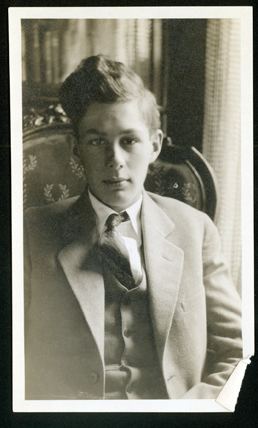Name Hartley Alexander Role Philosopher | Awards Butler Silver Medal | |
 | ||
Died 1939, Claremont, California, United States Books The World's Rim, North American Mythology, Nature And Human Nature, Letters To Teachers, God And Man's Destiny | ||
Spotlight on Faculty: Myriam J. A. Chancy, Hartley Burr Alexander Chair in the Humanities
Hartley Burr Alexander, PhD (1873–1939), was an American philosopher, writer, educator, scholar, poet, and iconographer.
Contents
- Spotlight on Faculty Myriam J A Chancy Hartley Burr Alexander Chair in the Humanities
- How to pronounce Hartley Burr Alexander American EnglishUS PronounceNamescom
- Family and early years
- Education
- Career and accomplishments
- Writings
- Iconographer
- References

How to pronounce Hartley Burr Alexander (American English/US) - PronounceNames.com
Family and early years
Alexander was born in Syracuse, Nebraska, on April 9, 1873. His father, the Rev. George Sherman Alexander (1823–1894), was a Methodist minister and pioneer newspaper editor in Nebraska. These twin sources were to implant in young Hartley a delight in the written word and a distrust of Christianity. His mother, Abigail Smith Alexander (1835–1876), died when he was three and in 1877 his father remarried Susan Godding (1829–1893). Ms. Godding had been a teacher and chairperson in the Methodist School in East Greenwich and at Friends College in Providence, Rhode Island, and brought with her to the harsh Nebraska frontier a love of art, music and language that was to stay with Alexander for the remainder of his long and productive life. Living on the frontier exposed Alexander to the ways of the First Peoples and was to instill in him an interest in Native religion and spirituality that was to form one of the paths of life that he was to follow. In 1890, while still in high school he wrote a poem, To a Child's Moccasin, (Found at Wounded Knee) that bucked the current philosophy that "the only good Indian was a dead Indian." This was not to be the only time that Alexander's conscience was to lead him to take an unpopular stand that would put him in opposition to the current American standards.
Education
After graduating from high school in Syracuse, Nebraska in 1892 Alexander attended the University of Nebraska in nearby Lincoln. Following that he attended graduate school at the University of Pennsylvania and obtained his doctorate at Columbia University in 1901.
He received the Knight of the Legion of Honor award from the government of France in 1936 and was awarded an Honorary Membership in the American Institute of Architects for his collaboration with many of its architect members.
Career and accomplishments
He was on the staff of Webster's Dictionary from 1903—1908, then became professor of philosophy at the University of Nebraska.
Writings
His published writings include:
He wrote a volume of poetry, Odes and Lyrics (1921). In 1919 he served as president of the American Philosophical Society.
Iconographer
Burr is believed to have coined the term iconographer to describe the work that he did developing iconographic schemes, decorative themes and inscriptions for a large number and variety of public buildings in the United States. These include:
